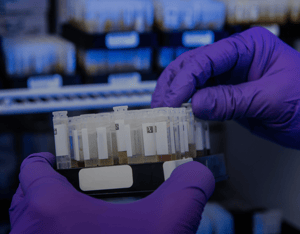.png?width=300&name=crl_purple_dots_bg_med%20(2).png)
Urine Collection
CRL offers a comprehensive test menu ranging from routine laboratory services to the latest in molecular testing. We continually advance our test menu, provide customizations, and hold ourselves to the highest of quality and support standards, uniquely positioning our partners to achieve the best possible outcomes.
- Routine Urine Collection
- Instructions (F)
- Instructions (M)
Urine Collection - Routine UA
To collect a routine urinalysis a clean mid-stream specimen should be obtained.
- Explain carefully to patients the mechanics of midstream collection and the importance of collecting an uncontaminated specimen. Teach them how to handle the specimen container to keep it free of contamination.
- A clean-catch specimen is necessary to confirm the presence or absence of infecting organisms in urine. The specimen must be free of any contaminating matter that might be present on the genital organs; therefore, patients should be urged to follow the steps below.
Instructions for the Female Patient
- If you are menstruating, first insert a fresh tampon or use cotton to stop the flow.
- Separate the skin folds around the urinary opening.
- Wash the urinary opening and its surroundings from front to back with a sterile antiseptic pad.
- Begin urinating into the toilet, making sure you keep the skin fold apart with the fingers of one hand.
- Wait until the urine stream is well established before moving the container into the path of the stream to catch the rest of the urine. Do not touch the container to the genital area.
- After collecting urine specimen in the cup provided, document urine temperature on the consent, if required, and pour off into the urine transport tubes provided.
- White screw top urine transport tube (heavy metals only)
- Pour urine from the collection cup into the white screw top transport tube.
- Testing may not be able to be completed on tubes with less than 5 ml of urine
- Urine tubes with preservative cannot be used for heavy metal testing
- Yellow top preservative transport tube (urinalysis only)
- Pour urine from the collection cup into the yellow top transport tube for urinalysis testing.
- Fill to the “max fill” line
- Testing may not be able to be completed on tubes with less than 4 ml of urine.
- White screw top urine transport tube (heavy metals only)
- Seal the top of the non-barcoded urine tube(s) with security seal signed by donor.
Instructions for the Male Patient
- Wash the end of the penis well with soapy water. Let it dry.
- Begin urinating into the toilet. Wait until the urine stream is well established before moving the container into the path of the stream to catch the rest of the urine. Do not touch the container to the genital area.
- After collecting urine specimen in the cup provided, document urine temperature on the consent, if required, and pour off into the urine transport tubes provided.
- White screw top urine transport tube (heavy metals only)
- Pour urine from the collection cup into the white screw top transport tube.
- Testing may not be able to be completed on tubes with less than 5 ml of urine
- Urine tubes with preservative cannot be used for heavy metal testing
- Yellow top preservative transport tube (urinalysis only)
- Pour urine from the collection cup into the yellow top transport tube for urinalysis testing.
- Fill to the “max fill” line
- Testing may not be able to be completed on tubes with less than 4 ml of urine.
- White screw top urine transport tube (heavy metals only)
- Seal the top of the non-barcoded urine tube(s) with security seal signed by donor.



